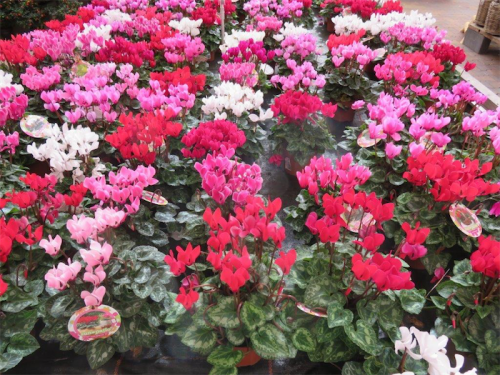
TWO elderly ladies, dressed in their finery at the Chelsea Flower Show, were having a heated discussion on a plant-name pronunciation.
According to the English “Country Life” magazine, they decided to approach one of Britain’s top breeders of clematis, who had a display at the show.
“Is this plant pronounced clemmatis, clem-ay-tis or clem-ar-tis?” they asked.
The plant breeder stiffened imperceptibly and said: “Ladies, it does not matter how you pronounce them, as long as you enjoy them.”
So far as I know, Australia and the US are the only two countries that pronounce cyclamen as in bicycle. Whereas Britain, Europe and possibly the rest of the world follow the botanical pronunciation guide “Plant Names Simplified” as cyclamen, sik-la-men.
Cyclamen’s name is a contraction of the Greek kyklaminos, from kyklos, a circle, alluding to the coiled stem of the seed vessel. All cyclamen originate in the Mediterranean region, from Spain to Turkey. The winter-flowering Cyclamen persicum being the most popular.
They won’t tolerate wet feet, so keep the saucer dry or fill the saucer with pebbles and sit the pot on top of the pebbles.
When flowering has finished don’t throw them out. Place the plant’s pot on its side in a dry spot, even in the garage. When new shoots appear in late autumn, stand the pots upright and start a watering and feeding regime. Alternatively, after flowering, plant out in the garden in a shady spot under deciduous trees, for example.
For ground cover, consider planting the ivy-leafed Cyclamen hederifolium (syn. C. neapolitanum) with masses of small, pink flowers offset by the green marbled effect of the leaves.
CITRUS isn’t frost hardy and while large, established lemons, for example, will generally tolerate our frosts, smaller or newly planted citrus need some protection.
If in containers, move to a frost-free spot such as in a carport. Alternatively, for trees in the ground put in four tomato stakes and make a surround of hessian or 90 per cent shade cloth. It’s recommended to remove the cover on top during the day.
During cold weather, water less frequently, keeping plants drier, but not to the point of the plant wilting. A high-potassium, liquid plant food, such as for tomatoes, can be applied in winter months.
IF establishing a new garden on a slope, it’s good to avoid creating frost pockets. Cold air flows to the lowest point, so avoid blocking a slope with a fence or a dense hedge. Allow spaces for frost to drain or roll away.
Jottings…
- Plant winter-flowering Clematis cirrhosa, especially “Wisley Cream” and Clematis neapolitanum.
- Unless dividing perennials, delay cutting back dead foliage until spring as this can protect new shoots emerging. This also applies to frost-damaged shrubs.
- It is a perfect time to plant hellebores, available now in wonderful new colours.
- Cut back oak-leafed hydrangeas, Hydrangea quercifolia, to 30-40cm. They will grow back up to two metres in the following season.
- And why is it rainwater tanks are always full when they’re not needed?
Who can be trusted?
In a world of spin and confusion, there’s never been a more important time to support independent journalism in Canberra.
If you trust our work online and want to enforce the power of independent voices, I invite you to make a small contribution.
Every dollar of support is invested back into our journalism to help keep citynews.com.au strong and free.
Thank you,
Ian Meikle, editor




Leave a Reply